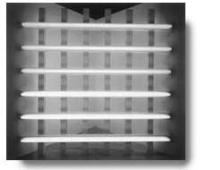Recorded Deeds 12.05.96
Recorded Deeds 12.05.96
AMAGANSETT
Fein to Howard and Bernice Stein, Cliff Road, $220,000.
Mulford 3d to Mary LeBey, Meeting House Lane, $450,000.
BRIDGEHAMPTON
Liotta to Margherita Liotta, Herons Court, $195,000.
EAST HAMPTON
J&P Son Inc. to Arnold and Barbara Ackerman, Barclay Court, $593,500.
Dickinson to Calvin Stewart, Tub Oarsman Road, $152,000.
Hogan to Stephen and Mary Cherry, Springy Banks Road, $425,000.
Gateway Investments to Further Lane Trust, Further Lane, $3,171,000.
MONTAUK
Emerson Dev. Corp. to Sidney and Leslie Wexler, Sunscape Condo, $155,000.
Thal to Marcus Farrell Jr., Old Montauk Highway, $1,700,000.
Hopkins to Louis and Kathy Fava, Flanders Road, $285,000.
Shea to Howard and Myra Bailin, North Farragut Road, $263,000.
NORTH HAVEN
Blake Anthony Inc. to Great Escapes Ltd., Barclay Drive, $215,000.
NOYAC
Torchen to John and Elizabeth Schulman, Crown Lane, $158,000.
SAG HARBOR
Schulman to David Sherwood and Michelle Beebee, Stony Hill Road, $160,000.
Mistler to Michael and Lauren Mishkin, Noyac Road, $565,000.
SAGAPONACK
St. John to Robert Balaban, Highland Terrace, $640,000.
SPRINGS
Schust estate to John Schust Sr., Norfolk Drive, $175,000.
WAINSCOTT
Stockman to Andrea Blumenthal, Debra's Way, $329,000.
WATER MILL
Damiecki to Charles and Natacha Casale, Uncle Leo's Lane, $155,000.
Sarason to David and Florence Friedman, Westminster Road, $580,000.
Sperling to Irwin and Janice Rubin, Water Mill Towd Road, $297,500.


